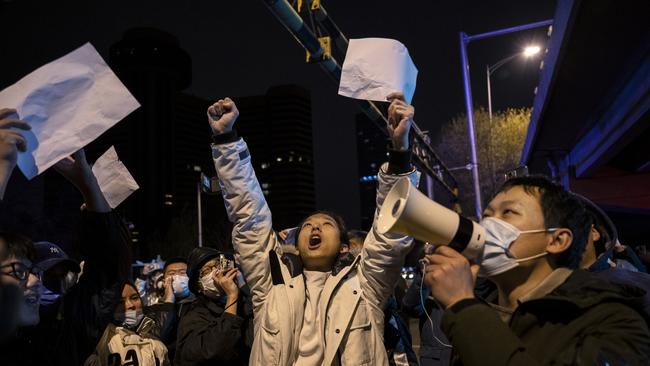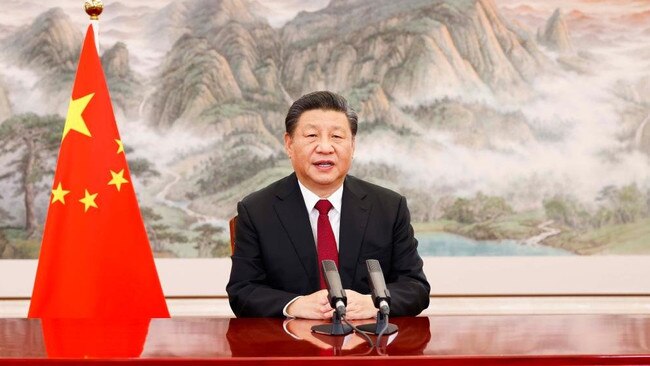
Investment bank Morgan Stanley has become one of the first to upgrade economic growth expectations for China next year — a sharp contrast to a year of constant downgrades in 2022.
“A faster pace of reopening, plus a full-court press on policy easing should lead to a sharper rebound in growth in 2013,” it says in a report on the Chinese economy issued on Tuesday titled Going for Growth.
The US firm has just lifted its already above-consensus outlook for growth in China next year from 5 per cent to 5.4 per cent — compared with a consensus expectation of 4.8 per cent.
The speed at which China has reacted to the recent protests on Covid-19 shutdowns has surprised observers both in and out of the country.
Just when it seemed that long-suffering Chinese citizens would be subjected to strict Covid-19 shutdowns well into 2023, the country is not only reopening but rapidly revising its messaging to its population to bring it more in line with the “living with Covid approach” of the rest of the world.
World economic growth expectations have been consistently revised down throughout 2022 on the back of rising global interest rates, and harsh and persistent lockdowns which have sharply cut back growth in China.
But with the all important 20th party Congress out of the way, China’s rulers are in a much better position to be flexible – particularly in the light of widespread protests around the country in the wake of the deadly fire in Urumqi three weeks ago.
The Asian Development Bank has just lowered its economic growth outlook for developing Asia and the Pacific, partly on the basis of continued weakness in the Chinese economy as a result of Covid-19 lockdowns and the problems in its property sector.
The ADB expects China’s growth rate to come in at only 3 per cent this year, down from its previous projection of 3.3 per cent.
It has downgraded its outlook for the Chinese economy in 2023 from 4.5 per cent to 4.2 per cent.
Being a conservatively run global institution, the ABD outlook would have been some weeks in the making while Morgan Stanley’s more sharply optimistic outlook is based on very recent events.
But the contrast between the ADB’s 4.2 per cent growth expectation for 2023 and Morgan Stanley’s 5.4 per cent highlights the extent of the turnaround in thinking. The potential for a more optimistic view of the Chinese economy than could have been conceived a few weeks ago.
If Morgan Stanley is correct, it represents a break with a year of global bad economic news in 2022 and would be good news for the Australian economy, given the strong links between its resource exports and China’s economic growth.
Morgan Stanley argues that these shafts of good news have yet to be reflected in world equity markets.
When it comes to share markets, however, as some Australian fund managers have discovered to their peril, there is a big difference between having a relatively upbeat view of the long-term outlook for China and Chinese shares themselves being a good investment.
Lack of transparent information about what is going on in China leads to persistent data lags and shocks for countries like Australia whose economic welfare is linked to China’s growth.

Those making bold predictions about the collapse of China have been constantly wrong.
The one caveat about the outlook as of December 2022 is the reality that the country is experiencing a serious outbreak of Covid-19 as it opens up.
Some China-following Twitter users have been posting this week that it is much easier to list the declining number of people in Beijing these days who don’t have Covid-19 than to list those who do.
Things are going to get worse with regard to Covid-19 in China for some time before they get better – particularly with the annual mass migration of the Lunar New Year period early next year with its tradition of hundreds of millions of Chinese huddled into overcrowded trains and buses as they make the mad dash home to visit family.
But, despite the fears about a renewed outbreak of Covid-19, the combination of the demonstrations across the country as well as concerns by global investors – such as iPhone manufacturer Apple and Taiwan’s Foxconn which has recently announced plans to invest another $US500m ($730m) expanding its operations in India – seems to have encouraged Chinese authorities to risk a policy reversal.
China is cautiously opening up to the rest of the world in other ways. US officials visited China this week to work on plans for the US Secretary of State Antony Blinken to visit there early next year.
It is not out of the question that officials from Australia could also travel to China next year to pave the way for more higher level country-to-country visits.
According to Beijing’s Municipal Bureau of Culture and Tourism, group tours to the Chinese capital have already resumed.
The next few months will see China navigating a tightrope of Covid-19 outbreaks putting pressure on its health system, while reversing its hitherto draconian Covid-19 restrictions.
As US based China watcher Bill Bishop, the author of well informed newsletter Sinocism, observed this week, it appears that there are rising cases of Covid-19 in Beijing but “so far at least there are no reports of hospitals being overrun so let’s hope the more dire predictions for the reopening waves are wrong”.
“But it is still way too early to tell and very risky to assume that everything will have passed within just a couple of months,” he said.
In short, China’s economic growth rates are not going to revert to pre pandemic levels any time soon – and foreign investors are now permanently reassessing their view of China in the wake of both Covid and supply chain disruptions.
A survey of 160 Australian companies operating in China, which was released on Wednesday, highlights the contrasting and complex views.
The survey showed a sharp increase in companies reporting a deterioration in the outlook for investing in China since the previous survey before the pandemic.
But it also shows that Australian companies currently operating in China are remarkably resilient, with 66 per cent having plans to return their investment and operations in the country to at least prepandemic levels or higher.
More than half were optimistic about market opportunities in China and the prospect of growing profitability for their business over the next two years.
The chairman of AustCham China, Beijing-based Vaughn Barber, said the survey showed the resilience and adaptability of Australian companies operating in China.
“The improvement in the bilateral relationship since the federal election and recent changes to China’s Covid-19 policies are welcomed by business and augers well for cautious optimism,” he said.
It’s a complex picture but it seems that the economic outlook for China at the end of 2022 is more upbeat than many would have dared to hope even a month ago.




As China stuns the world with its about-face on almost three years of Covid-19 restrictions, hasty recalculations are being made on what it could mean for growth in the world’s second largest economy in 2023.